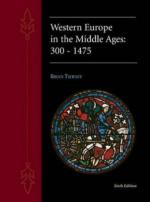|
This section contains 2,510 words (approx. 9 pages at 300 words per page) |

|
Impact. All of medieval communication over distance required travel. Most travel took place by walking, but horse and cart, cog, and carrack all played an important role in medieval mobility. Even if undertaken by traders, some long-distance journeys could rightly be thought of as exploration. While the longer-term effect was frequently economic, the initial impact of exploration and explorers themselves was more often cultural and linguistic.
Characteristics. Travel in the Middle Ages was characterized by slowness, effort, and uncertainty. By whatever means, it was seasonal. Travelers walked, and if unaccompanied by animals, carried or dragged any luggage or wares. Farmers walked to their fields and back. Shepherds also walked at least a stretch each day to move livestock to pasture. On a daily basis, medieval craftsmen moved about only within town. Medieval urban dwellers usually resided directly above or next to their shops...
|
This section contains 2,510 words (approx. 9 pages at 300 words per page) |

|




